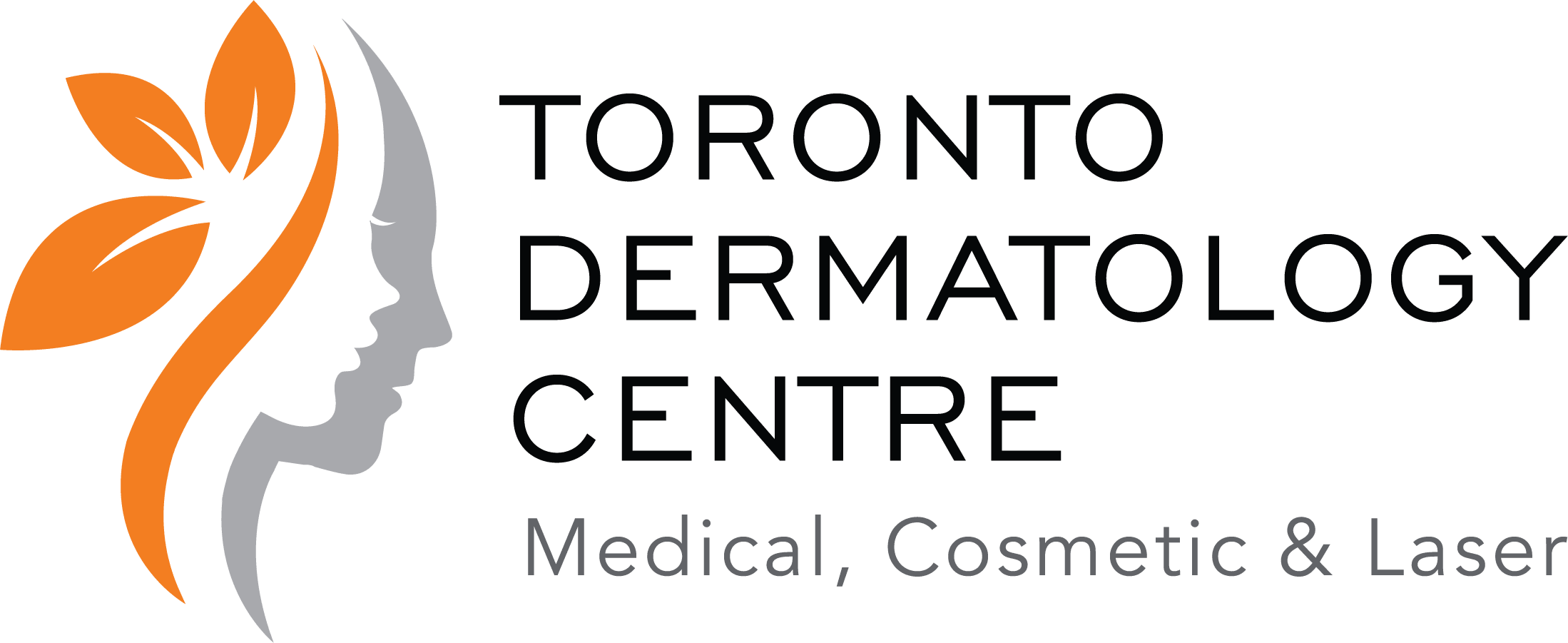The Toronto Dermatology Centre is one of the best places in Canada to manage your scars. Our team of outstanding doctors and estheticians can offer both a comprehensive assessment and diagnosis of your skin, and also discuss all the treatment options including: prescription creams, over the counter treatments, physician-grade skin products exclusive to our clinic, laser resurfacing with the Profractional laser, subcision, chemical peels, microdermabrasion, laser and light devices, cortisone injections and education on coverup/makeup and natural and alternative treatment options.
Scars result when the skin repairs wounds caused by trauma, diseases, or surgery. They are a natural part of the healing process. The more the skin is damaged and the longer it takes to heal, the greater the chance of a noticeable scar.
Typically, a scar may appear red and thick at first, and then gradually fade. Many actively healing scars that seem unsightly at three months may heal nicely if given more time since scars take a full year to mature.
The way a scar forms is affected by an individual’s age and the location on the body or face. Younger skin makes strong repairs and tends to over-heal resulting in larger, thicker scars. Skin over a jawbone is tighter than skin on the cheek and will make a scar easier to see. If a scar is indented or raised, irregular shadows will be seen, giving the skin an uneven appearance.
Keloids and hypertrophic scars are special types of scars that result in an overgrowth of tissue at the site of a healed skin injury. They are typically firm, rubbery, and shiny.
What Can And Cannot Be Done For Scars?
Several techniques can remove scars. Most of these are done routinely in the dermatology clinic. Surgical scar revision can improve the way scars look by changing the size, depth, or color. However, no scar can ever be completely erased, and no technique will return the scar to its normal uninjured appearance. Surgical scar removal typically results in a less obvious mark. Because each scar is different, each will require a different approach.
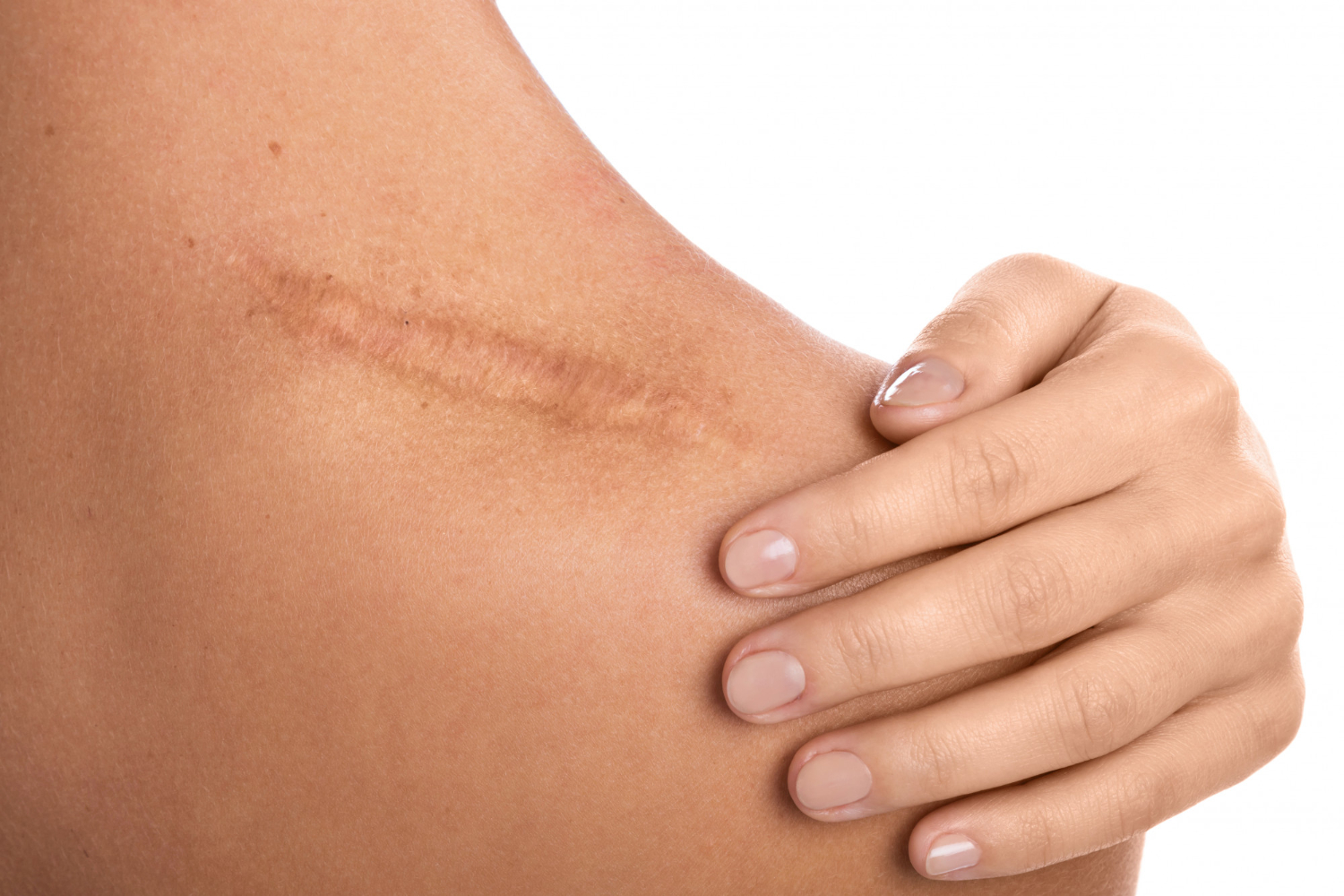
Scar Treatment
Topical creams are useful for hyperpigmentation. These include vitamin A/tretinoin creams (by prescription), and also alpha hydroxy acids such as glycolic acid.
Cortisone (steroid) injections are effective in softening very firm scars (or keloids) causing them to shrink and flatten. This scar treatment is popular for hypertrophic scars and keloids. Less commonly, intralesional bleomycin may be used.
Cryosurgery involves freezing of the upper skin layers that causes blistering of the skin to remove the excess tissue of the scar.
Silicone-containing gels and sheets (e.g. Strataderm, Stratamed or Stratamark) have shown modest benefit in reducing scar thickness and pain. They must also be used regularly and results are variable.
Cosmetics applied correctly can be very good at covering up scars. Physicians encourage patients to wear make-up after scar treatments. Make-up will improve the appearance while nature completes the healing process. Oxygenetix, a leader in foundation and post-procedure makeup, Cover FX, Covermark and Dermablend are particularly good at covering up scars.
Surgical Scar Revision – Based on the ability of the skin to stretch with time, surgical scar revision is a method of removing a scar and rejoining the normal skin in a less obvious fashion. The surgical removal of scars is best suited for wide or long scars, those in prominent places, or scars that have healed in a particular pattern or shape. Wide scars can often be cut out and closed, resulting in a thinner scar, and long scars can be made shorter.
Laser Resurfacing and Pulsed Dye Laser – Another method of improving surgical, acne, chicken pox, and other scars is laser scar revision. High-energy light is used to remove or remodel unwanted, damaged skin. Patients can usually return to work or regular activity within one week, but skin may stay pink for several weeks or months, particularly after skin resurfacing with a carbon dioxide laser. Several different lasers are available depending on the skin defect requiring improvement. A pulsed dye laser, for example removes scar redness and flattens raised scars (hypertrophic scars or keloids). This laser can also improve itching and burning sensations in the scar. Acne scars or other indented (atrophic) scars can be improved with laser skin resurfacing. The newest lasers for acne scar resurfacing are the fractionated lasers (eg. ProFractional, Fraxel) which are showing very promising results.
Soft Tissue Fillers (eg. hyaluronic acid) – Various injectable substances are available to elevate indented soft scars. The amount of material injected will vary with the size and firmness of the scar. Improvement is immediate but is not permanent and treatments often need to be repeated.
Before & After
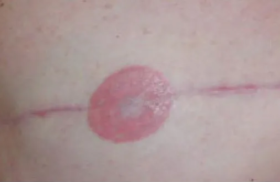
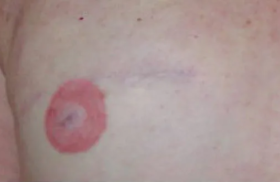
Before & After
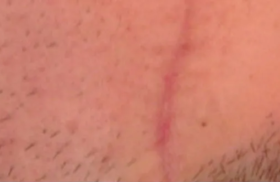
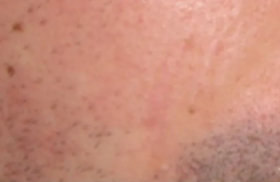
Punch Grafts and Punch Excisions – Punch grafts are small pieces of normal skin used to replace scarred skin. A tiny circular “cookie cutter” is used to cut a hole in the skin and remove the scar.
The area is then filled in with a matching piece of unscarred skin, usually taken from the skin behind the ear. The “plugs” are taped into place for five to seven days as they heal. Punch excisions, on the other hand, involve the use of stitches to close the holes produced by the tiny skin punch.
The stitches are removed in five to seven days. Even though the punch grafts and excisions form scars of their own, they provide a smoother skin surface which is less visible than depressed scars. Deep or “pitted” acne scars can be best treated by punch grafts or excisions, and also by laser resurfacing (e.g. Profractional laser), and trichloroacetic acid (CROSS) treatment; subcision (below) can also be beneficial as an adjunctive treatment.
It is best to have an assessment by a physician to determine the type of scars that you have, and based on your skin type, type of scarring, amount of downtime you can take, and budget, our dermatologists can figure out a treatment plan for you.
Subcision – This is a process used to treat deep rolling acne scars by separating the skin tissue from deeper scar tissue using physical (needle movement under the skin) and sometimes chemical (saline injection) means. This allows blood to pool under the affected area as well as to break up tethered scar cords, eventually causing the skin to elevate. Several sessions are often required and there is often bruising for 7-10 days.
Chemical Peels – This procedure involves the use of a chemical to remove the top layer of the skin in order to smooth depressed scars and give the skin a more even color. It is most helpful for shallow superficial scars. Different chemicals can be used for different depth peels. Light peels require no healing time while deeper peels can require up to two weeks to heal.
Microdermabrasion – This is a method of treating acne scars, pockmarks, some surgical scars, or minor irregularities of the skin’s surface. A machine is used by the physician to remove the top layers of skin to give a more even contour to the surface of the skin. While it can offer improvement for certain scars, it cannot get rid of the scar entirely. Patients can usually return to work within a week.
We frequently treat all types of scars, and from all types of causes including scars following heart surgery (typically keloid scars), or scars following car accidents (MVA), or from cancer surgery such as breast cancer reconstruction. We also can improve or revise scars from previous minor procedures such as mole or cyst or lipoma removal.
Toronto Dermatology Centre is located in Toronto, Ontario, and serves men and women in North York, Vaughan, Richmond Hill, York, Aurora, Thornhill, Mississauga, Etobicoke, Scarborough, Pickering, Peterborough, Guelph, Kitchener, Waterloo, Hamilton, Oshawa, Barrie, downtown, midtown, uptown and all of Greater Toronto (GTA).
Thinking of visiting Toronto’s premier skin clinic soon?
Fill out the inquiry form below and let us know your area of interest.
Call us today @ 416.633.0001
